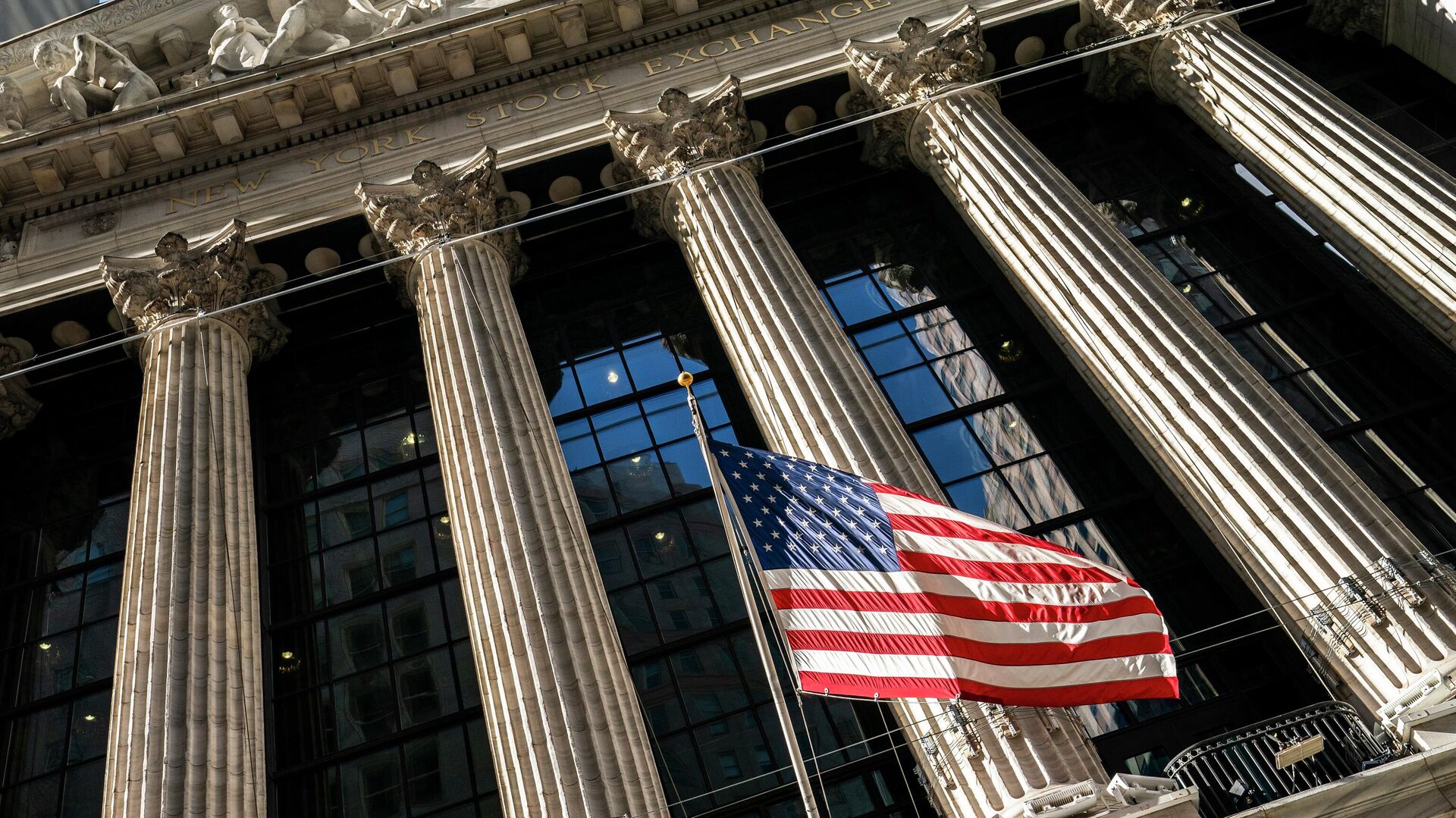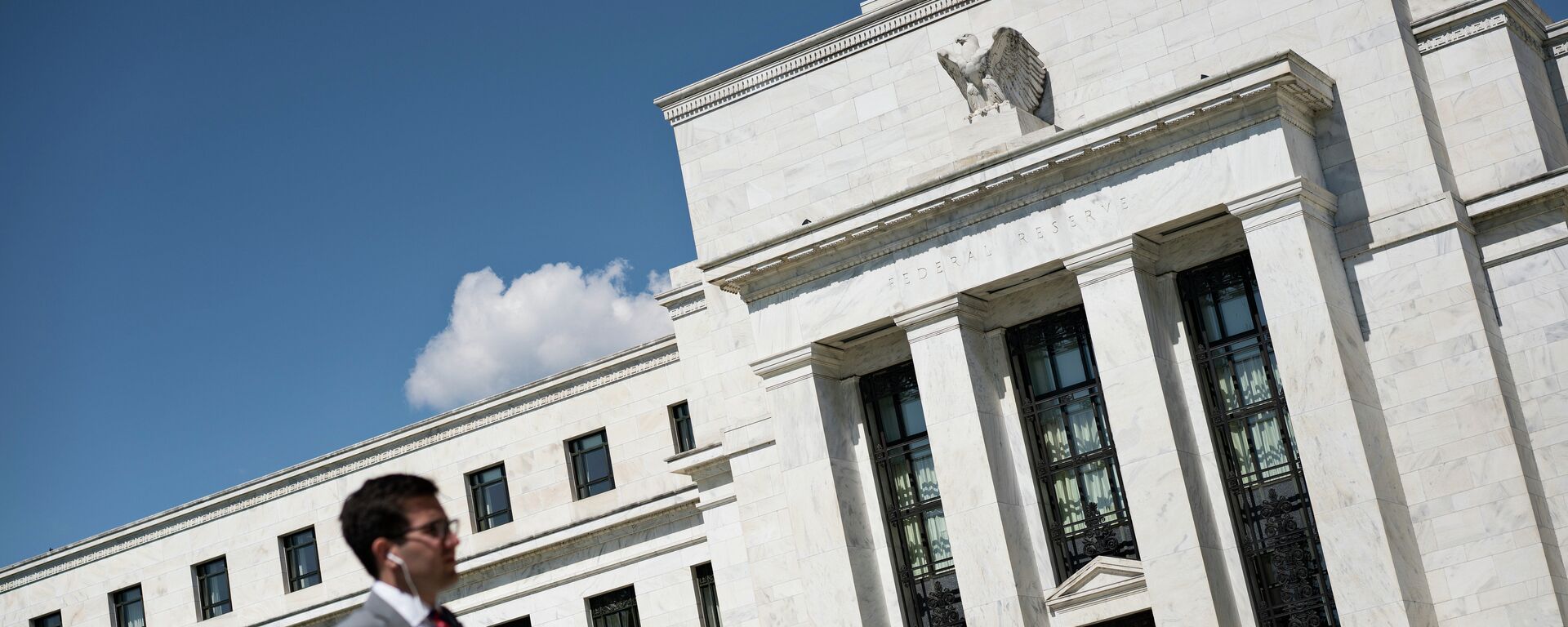https://sputnikglobe.com/20230413/us-interest-rate-hikes-might-not-need-to-be-monthly-anymore---federal-reserve-official-1109454057.html
US Interest Rate Hikes Might Not Need to Be Monthly Anymore - Federal Reserve Official
US Interest Rate Hikes Might Not Need to Be Monthly Anymore - Federal Reserve Official
Sputnik International
The US central bank might not need to raise interest rates on a monthly basis anymore as inflation in the United States appears to be cooling, Federal Reserve Bank of San Francisco President Mary Daly said on Wednesday.
2023-04-13T00:16+0000
2023-04-13T00:16+0000
2023-04-13T00:13+0000
economy
us
federal reserve
interest rate
us economy
https://cdn1.img.sputnikglobe.com/img/07e6/05/04/1095272424_0:321:3071:2048_1920x0_80_0_0_567714ac57b74db48660415d8f7574c6.jpg
"We don’t keep raising interest rates till we get to 2%," Daly said at a publicly-broadcast event, referring to the Fed’s long-term inflation target versus the current rate of 5%. Daly’s remarks came after latest data showed US consumer prices cooled for the year to March, growing about one percent below February levels, even as core prices minus food and energy remained stubbornly higher, indicating mixed results for the central bank’s fight against inflation. The Consumer Price Index (CPI) grew at an annual rate of 5% last month versus a forecast 5.1% and against February’s 6%. For the month itself, March CPI was up 0.1% versus a forecast 0.2% and against February’s 0.4%. But core CPI, which strips out food and energy prices, expanded as forecast by an annual 5.6% versus February’s 5.5%. For the month, core CPI grew by a slower 0.4% for March as forecast, versus 0.5% for February. The Fed has raised rates by 475 basis points over the past 13 months, taking them to a peak of 5% from just 0.25% after the COVID-19 outbreak in March 2020. While it is still early to anticipate what the Fed will do at its next rate decision in May, some economists are pricing in another hike of 25 basis points based on the relatively steady jobs growth for March, which came in less than 100,000 below February’s level. Others, influenced by the latest CPI data, think the Fed might actually call for a pause. The Fed’s own appetite for inflation is just 2% per annum versus the current rate of 5%. "The Fed has tools and can absolutely reduce inflation," Daly said, pointing out that even without rate hikes, there is "a lot more monetary policy tightening in the pipeline". Aside from the CPI, the Fed’s main guide for rates has been the monthly non-farm payrolls report and it has identified robust job and wages growth as two key drivers of inflation. The labor market has powered the US recovery from the pandemic, with hundreds of thousands of jobs being added each month since June 2020, making up for the initial loss of 20 million jobs. Average monthly wages have also grown without a stop since May 2021.
https://sputnikglobe.com/20230322/us-federal-reserve-adds-another-25-basis-points-bringing-rates-to-5-peak-1108700605.html
https://sputnikglobe.com/20230412/us-federal-reserve-sees-mild-recession-in-later-2023-recovery-in-2-years-1109448647.html
Sputnik International
feedback@sputniknews.com
+74956456601
MIA „Rossiya Segodnya“
2023
Sputnik International
feedback@sputniknews.com
+74956456601
MIA „Rossiya Segodnya“
News
en_EN
Sputnik International
feedback@sputniknews.com
+74956456601
MIA „Rossiya Segodnya“
Sputnik International
feedback@sputniknews.com
+74956456601
MIA „Rossiya Segodnya“
interest rate hike, federal reserve, us central bank, federal reserve bank of san francisco president mary daly, inflation
interest rate hike, federal reserve, us central bank, federal reserve bank of san francisco president mary daly, inflation
US Interest Rate Hikes Might Not Need to Be Monthly Anymore - Federal Reserve Official
WASHINGTON (Sputnik) - The US central bank might not need to raise interest rates on a monthly basis anymore as inflation in the United States appears to be cooling, Federal Reserve Bank of San Francisco President Mary Daly said on Wednesday.
"We don’t keep raising interest rates till we get to 2%," Daly said at a publicly-broadcast event, referring to the Fed’s long-term inflation target versus the current rate of 5%.
"We don’t keep raising interest rates with blinders on. Policy tightening has reached a point where we do not expect rates to be raised at every meeting."
Daly’s remarks came after latest data showed US consumer prices cooled for the year to March, growing about one percent below February levels, even as core prices minus food and energy remained stubbornly higher, indicating mixed results for the central bank’s fight against inflation.
The Consumer Price Index (CPI) grew at an annual rate of 5% last month versus a forecast 5.1% and against February’s 6%. For the month itself, March CPI was up 0.1% versus a forecast 0.2% and against February’s 0.4%.
But core CPI, which strips out food and energy prices, expanded as forecast by an annual 5.6% versus February’s 5.5%. For the month, core CPI grew by a slower 0.4% for March as forecast, versus 0.5% for February.
"Traders and analysts continue to look for lower shelter costs to start to kick in," economist Greg Michalowski said in a post on the ForexLive forum, referring to one of the elements of higher inflation that was worrying the market.
The Fed has raised rates by 475 basis points over the past 13 months, taking them to a peak of 5% from just 0.25% after the COVID-19 outbreak in March 2020.
While it is still early to anticipate what the Fed will do at its next rate decision in May, some economists are pricing in another hike of 25 basis points based on the relatively steady jobs growth for March, which came in less than 100,000 below February’s level.
Others, influenced by the latest CPI data, think the Fed might actually call for a pause. The Fed’s own appetite for inflation is just 2% per annum versus the current rate of 5%.
"The Fed has tools and can absolutely reduce inflation," Daly said, pointing out that even without rate hikes, there is "a lot more monetary policy tightening in the pipeline".
"When credit conditions tighten, the economy slows, reducing the need for the Fed to tighten further," Daly added. "There is a lot of uncertainty about how long it will take for rate hikes to have an effect on the economy. The CPI release revealed good news, but the level remained elevated."
Aside from the CPI, the Fed’s main guide for rates has been the monthly non-farm payrolls report and it has identified robust job and wages growth as two key drivers of inflation.
The labor market has powered the US recovery from the pandemic, with hundreds of thousands of jobs being added each month since June 2020, making up for the initial loss of 20 million jobs. Average monthly wages have also grown without a stop since May 2021.




